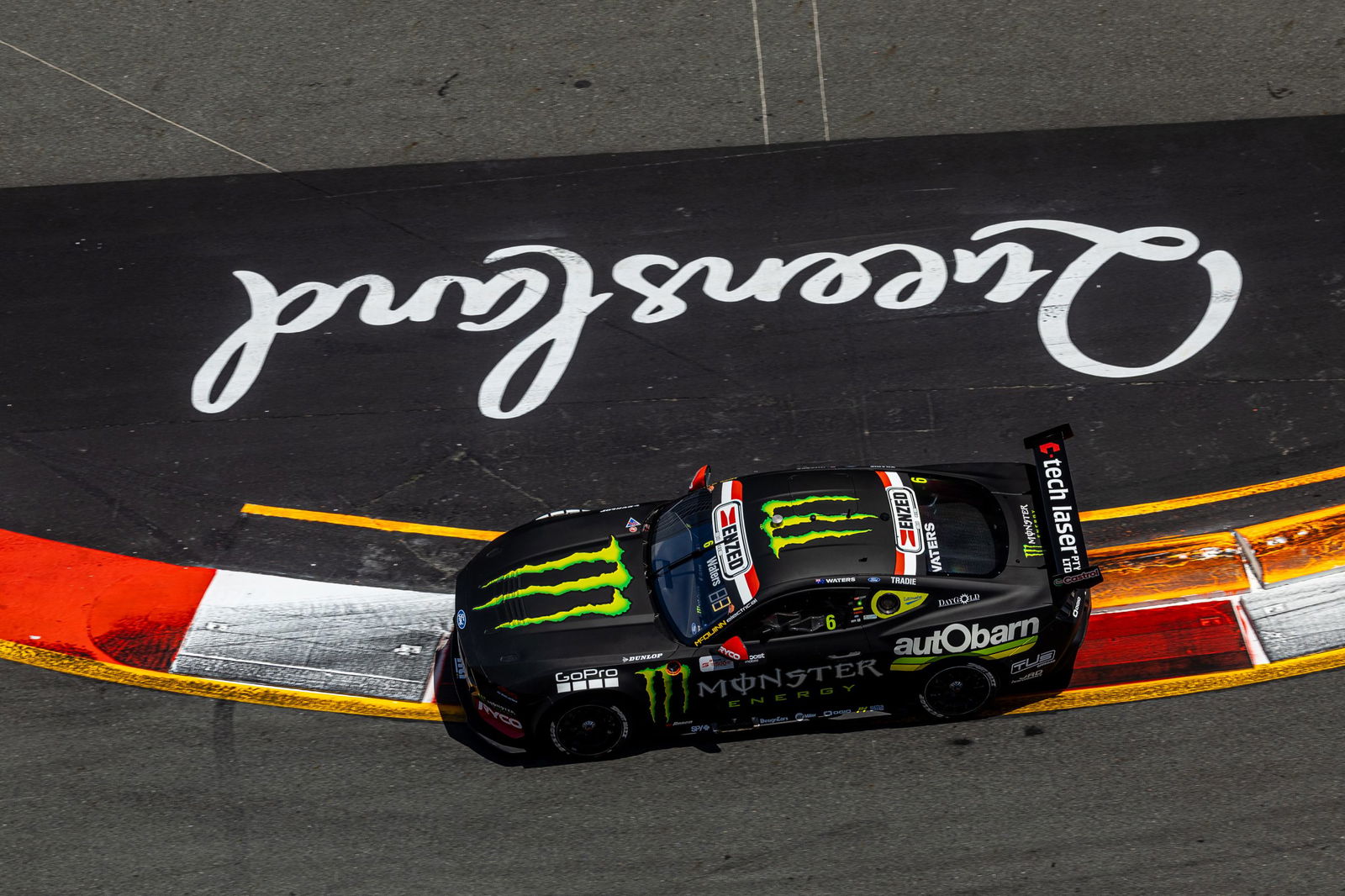

Waters led the way on what was a dominant day for the Blue Oval, winning the opening heat on the Gold Coast ahead of Tickford teammate Thomas Randle.
It could easily have been a Ford podium sweep had Chaz Mostert not struck technical issues, which opened the door for Triple Eight’s Broc Feeney to land third place.
The Gold Coast result was a turnaround for Ford after Mustang crews missed the podium altogether at both the Sandown 500 and the Bathurst 1000.
So why the upswing in form?
According to Waters, the Mustang is suddenly competitive again because the Gold Coast is a low-speed layout, as opposed to the long straights at both Sandown and Bathurst.
“We’re really competitive at street tracks and the slower speed circuits,” he said. “I think it’s probably because there are less straights that we have to go fast down.”
When asked by Speedcafe to elaborate on the perceived deficit, Waters said: “I’ve got no idea. I hold it flat, I pull gears, and I lose time down the straights. The longer the straight, the more time I lose”.
The comments follow more than a year of stringent parity testing by Supercars, which has included expensive trips to the US for wind tunnel and transient dyno work.
While parity has clearly been less than an issue than it was in the first Gen3 season last year, Waters’ comments highlight that the issue is far from solved.
“First of all I take my hat off to Supercars for spending the money and doing all the things,” added Waters.
“This year has been a lot better, for sure. And it’s due to their hard work.
“But at the end of the day, you look at the timing report, and that tells you if it’s right or not. And obviously it’s not.”
The top 10 in today’s race was an even split between the brands, with Fords in first, second, fourth, ninth and 10th, and Camaros in third and fifth to eighth.



















Discussion about this post